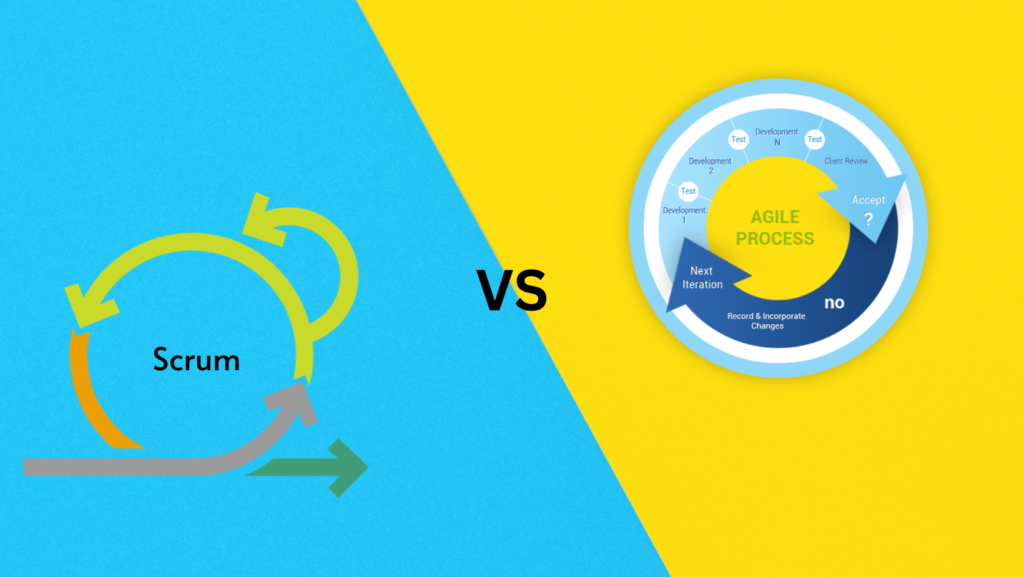Navigating Project Management: A Comprehensive Guide to Agile, Scrum, and More

What is an Agile Methodology?
Agile methodology is a flexible and iterative approach to project management that emphasizes adaptability, collaboration, and customer satisfaction. It originated in the software development industry but has since found widespread application in various fields. The core principles of Agile include continuous improvement, delivering small, incremental releases, and incorporating customer feedback throughout the development process.
Key Features of Agile:
- Iterative Development: Projects are divided into small, manageable iterations, allowing for regular reassessment and adaptation.
- Collaborative Teams: Cross-functional teams work closely together, promoting communication and collaboration.
- Customer Involvement: Regular feedback from customers ensures that the project meets their evolving needs and expectations.
- Adaptability: Agile welcomes changes even late in the development process, responding to emerging requirements.
- Continuous Delivery: Regular, small releases ensure that usable and valuable product increments are delivered consistently.
What is a Scrum Methodology?
Scrum is a specific framework within the Agile methodology, providing a structured yet flexible approach to project management. It divides work into time-boxed iterations called sprints, usually lasting two to four weeks. Scrum emphasizes transparency, inspection, and adaptation throughout the development process.
Key Components of Scrum:
- Roles:
- Product Owner: Represents the customer and defines product features.
- Scrum Master: Facilitates the Scrum process and removes impediments.
- Development Team: Self-organizing group responsible for delivering the product increment.
- Artifacts:
- Product Backlog: A prioritized list of features and requirements.
- Sprint Backlog: A subset of the product backlog selected for a specific sprint.
- Events:
- Sprint Planning: Deciding what work will be done during the sprint.
- Daily Scrum: A short daily meeting for team synchronization.
- Sprint Review: Review of the completed work at the end of the sprint.
- Sprint Retrospective: Reflection on the sprint to improve processes.
Agile vs. Scrum
| Feature | Agile | Scrum |
| Flexibility | Highly flexible and adaptive | Flexible within the Scrum framework |
| Roles | Collaborative team approach | Defined roles (Product Owner, Scrum Master, Development Team) |
| Iterations | Short, iterative cycles | Fixed-length iterations (sprints) |
| Feedback | Constant customer feedback | Regular feedback in Sprint Review |
| Project Structure | Broad approach to project management | Specific framework within Agile |
| Planning | Adaptive planning throughout | Sprint Planning for each iteration |
Scrum vs. Kanban: Differences and Similarities with Examples
Scrum:
- Iterations: Work is divided into fixed-length sprints.
- Roles: Specific roles (Product Owner, Scrum Master, Development Team).
- Visual Board: Often uses a physical or digital board for task tracking.
Kanban:
- Continuous Flow: No fixed iterations; work flows continuously.
- Roles: No predefined roles; team members take on tasks as needed.
- Visual Board: Emphasizes a visual representation of the entire workflow.
Example: Imagine a software development project. In Scrum, the team plans specific features for each sprint. In Kanban, tasks are continuously pulled from a backlog as capacity allows, without fixed timeframes.
Conclusion
In conclusion, adopting Agile methodologies, particularly Scrum, can be transformative for project management, fostering a dynamic and collaborative environment. The principles of adaptability, customer engagement, and incremental progress lie at the heart of these frameworks, ensuring that projects stay responsive to changing requirements.
The comparison between Agile and Scrum, as well as the exploration of Scrum versus Kanban, provides valuable insights into the diverse approaches available. While Agile sets the overarching philosophy, Scrum’s structured framework and Kanban’s continuous flow offer distinct advantages depending on the nature of the project and the team dynamics.
Ultimately, the choice between Agile and Scrum, or even considering alternatives like Kanban, should align with the specific needs and goals of the project and the organization. The journey towards successful project management is not a one-size-fits-all endeavor but rather a continual process of learning, adapting, and refining strategies based on real-time feedback and experiences. Embracing these methodologies empowers teams to deliver high-quality results with enhanced efficiency, customer satisfaction, and overall project success.
Frequently Asked Questions (FAQs)
- What sets Scrum apart from Agile?
- Agile is a development methodology centered on an iterative and incremental approach. In contrast, Scrum is a specific implementation of the Agile methodology, focusing on the timely delivery of incremental changes.
- Is Scrum a component of Agile?
- Yes, Scrum is an integral part of Agile. While Agile serves as the overarching project management approach, Scrum is the method employed for its implementation.
- Is a Sprint associated with Scrum or Agile?
- A Sprint is a dedicated timeframe during which a predefined amount of work is accomplished in a project. It forms a crucial component of the Agile methodology, and specifically, it is prominently featured in Scrum as an essential part of its iterative development process.

Leave a Reply